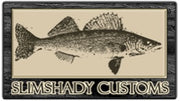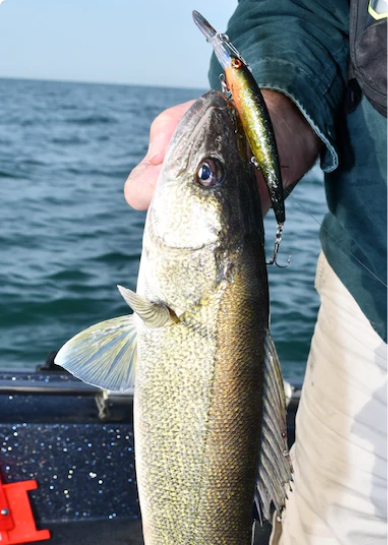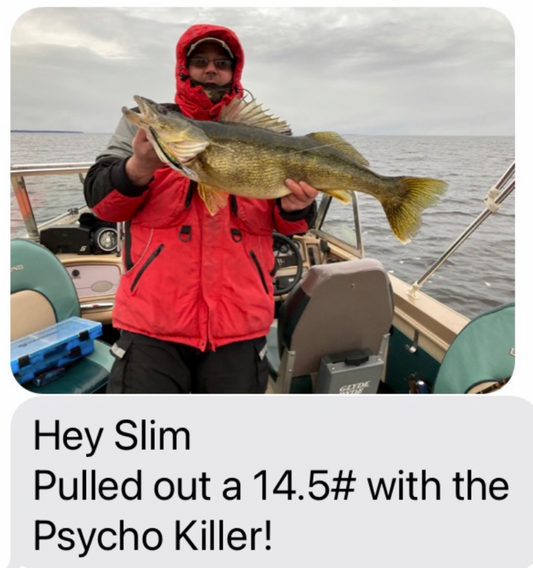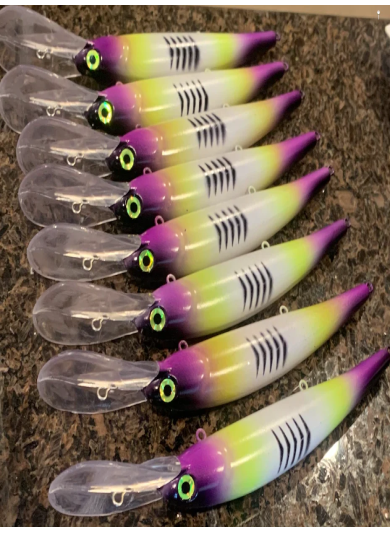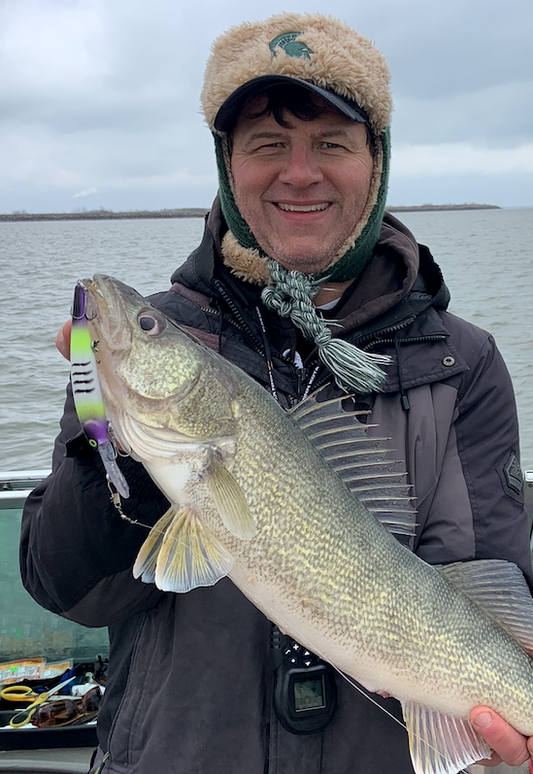Article: How far out should I run my boards?
When trolling for walleyes on big water like we have in the Great Lakes, running planer boards is by-far the most efficient way to cover water and catch fish. In an earlier article, I covered the various types of planer boards and the pros and cons of each. If you missed that one, you can find it in the blog list from last February.
When you read fishing reports on the forums or get reports from your buddies, you are likely to hear them say things like “Bandits, 25-35 back @ 2 mph” or something to that effect. That means they let out 25-35 feet of line, then attach their line to an in-line planer board and send it out to the side. If they are running big boards, they do the same, only they are attaching their line to a sliding release and sending that out to the side. The distance “back” is the distance that determines how deep your bait will run. If you are trolling crankbaits, then I highly recommend using the “Precision Trolling App” to determine how deep the crankbaits you’re using will run at a given distance back (and speed). The app is free on the Apple App Store or Google Play, however, you do need to pay for the libraries of content. You can either pay by the individual crankbait (brand and model), or you can purchase them in bulk. I don’t mind paying for this information, because I know how much effort those guys put into getting us accurate data.
That said, there is another measurement that is also important to know when you are pulling boards, IMO. That measurement is how far out to the sides they were running their boards. Granted, this measurement is not nearly as important as how far back, however, I do feel it can be a big factor in the number of fish caught, depending on the conditions.
Just like most things in the fishing world, there are many opinions about how far planer boards should be run out to the sides of your boat. I will give you my opinion based on my experience of using them for years and watching others do so.
“Better get some binoculars…”
One day, while fishing in Canadian waters on Lake Erie, my buddy Jim Balzer (aka Double-J) joked that my outside boards are so far from the boat that they need an OH license. While that is certainly a slight exaggeration, I do like to run them way out. This is especially true when the fish are up high and/or the water is clear.
Here is my normal set-up for running 3 boards per side:
- Outside board – 150 feet out
- Middle board – 110 feet out
- Inside board – 70 feet out
However, if the water is flat calm and/or the fish are up high in the water column, I have been known to run my outside boards 200 feet from the boat or more. In those situations, I would just add 50 feet to the numbers above. (120/160/200)
That said, if I am fishing in heavy boat traffic (which I try to avoid), I will pull them much tighter to the boat.
My typical configuration for fishing in higher boat traffic would be:
- Outside board – 100 feet
- Middle board – 75 feet
- Inside board – 50 feet
There are days when it doesn’t matter. If the water is very stained and there’s a heavy chop on the water, you can get away with running them much closer to the boat. However, there are other days when it matters a bunch.
I will give you one example from last fall. I had been out the day before on Lake Erie and we caught 30+ walleyes, including several over 7 lbs. I shared that report with a buddy of mine, and he decided to hit the same area the next day. He went to my numbers and ran the same program, however, 3 hours into the day they only had a few fish in the boat. I was shocked. I figured he would have been tired of reeling them in by then. I was planning on going again on my boat that afternoon, however, my buddy invited me to join them on his boat and he would swing in and pick me up at the launch. I brought a couple boxes of my custom baits with me, as I wanted to eliminate any variables that might make a difference. We ran back out to my numbers and started setting lines. I took one side, and they took the other. We had been catching the fish up high the day before, with as little as 15-20 feet behind the boards on the outside lines. There were 3 of us now, so we could run 4 per side. The water had cleared up a bit, and it was flat calm, so I ran my outside board 190 feet out- 15 back, 160 out – 25 back, 130 out – 35 back and 100 on the inside – 45 back.

Here are two of the fish from the trip on my buddy's boat:
When I was done setting my boards, I glanced over to the other side, and they had all 4 boards running closer than my inside board was. Theirs were spread 25/40/55/70 feet from the boat. So, I asked my buddy why he was running them so close to the boat? He said, “that’s how we normally run them, why?”. I said, “I think I figured out why you aren’t catching them very well today. You need to move them way out!”. He was skeptical and thought they were fine how they were. However, after 6 fish in a row came from my side, and primarily from the outside boards on my side, I noticed that they had moved their boards much further out as well. After doing that, we seemed to catch them evenly between the two sides, yet still primarily from the outside boards.
“Knowing when you have a bite can be a drag….literally”
When you are running your boards that far away from the boat, it can be a challenge to see what is happening out there. This is especially true in the fall when the sun is low to the water and the glare can be bad. Therefore, to help me know when I have a bite, I like to keep my reels on “clicker mode” and with the drags set as light as possible, without slipping from the pull of the board. That way, if a fish hits while I’m not looking (or can’t see the board), I will hear the drag slipping. When I get a fish on an outside or middle board, I will pop the line out of the front release and allow the board to fall back for 10 seconds or so before beginning to reel. This allows the fish and board to clear the other lines and avoid tangles.
With the short leads we typically use in MI/CAN waters of Erie and Lake St. Clair, I like to run my outside boards up higher (shorter leads) and my inside boards the deepest (longer leads). However, with long leads (say over 60 feet back), I will reverse the order. I will run my longest leads on the outside and shortest on the inside to avoid tangling when you get a fish on an outside board. It is hard to allow them to drop back far enough to avoid the tangles otherwise.
When resetting a line after catching a fish, it is not necessary to move boards out. Simply set your board “down the chute” (straight back from the boat) on a free spool (no clicker) until it reaches its final distance and then engage the clicker and drag. It should fall right into its previous spot without any issues. However, if you leave the clicker on with any resistance against it, it will start tracking to the side too early and could catch other lines on its way out.
Not only do I like running my boards further out, I also like more separation between the boards than some people have. I like them no closer than 25 feet apart, however, 40 is my “go-to”. That helps eliminate tangles, IMO. On the flip-side, some people feel that you are more likely to get multiple bites at once if they are closer together as you go through the school.
Again, these are my opinions, based on my experience from many years on the water. Hopefully, what I have learned will help others who are just getting started with big water trolling.
See you at the ramp!
